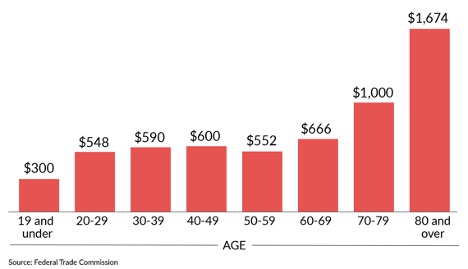For people struggling with depression, the findings show you don’t have to run marathons or otherwise train strenuously to benefit.
By Gretchen Reynolds
March 15, 2023
Exercise as a treatment for severe depression is at least as effective as standard drugs or psychotherapy and by some measures better, according to the largest study to date of exercise as “medicine” for depression.
The study pooled data from 41 studies involving 2,265 people with depression and showed that almost any type of exercise substantially reduces depression symptoms, although some forms of exercise seemed more beneficial than others.

“We found large, significant results,” said Andreas Heissel, an exercise scientist at the University of Potsdam in Germany, who led the study. For people struggling with depression, he said, the findings show you don’t have to run marathons or otherwise train strenuously to benefit. “Something is better than nothing,” Heissel said. The effects were robust enough that the study’s authors hope the finding will spur a move to make exercise a standard, prescribed therapy for depression.
That approach would represent a notable shift. The American Psychological Association’s clinical practice guidelines, updated in 2019, recommend seven types of psychotherapy and several antidepressants for the treatment of depression, but they do not mention exercise. The World Health Organization promotes exercise for mental health as an add-on to traditional treatments — not on its own. But the study’s authors are confident. “We expect this review to lead to updated guidelines and recommendations for exercise as a first-line treatment option,” Heissel said.
Some depression experts are hesitant. “I think that exercise should be prescribed for everyone with depression,” said Murray B. Stein, a professor and vice chair for clinical research in the department of psychiatry at the University of California at San Diego who was not involved in the study. “I still feel the evidence is weak, though, that exercise be considered a first-line treatment for depression.”
The research behind exercise and depression
Scientists and clinicians have known for some time that exercise protects us against developing depression. In large-scale epidemiological studies, active men and women become depressed at much lower rates than sedentary people, even if they exercise for only a few minutes a day or a few days a week.
But it’s trickier to test exercise as a treatment for existing depression. You have to study it like any medicine, by recruiting people with the condition and randomly assigning them to the intervention — in this case, exercise — or a control group and scrupulously tracking what happens.
Because these experiments tend to be complicated and expensive, past studies using exercise against depression have been small, typically involving only a few dozen people, making it difficult to draw firm conclusions about whether and how well exercise treats depression.
In the study published in February in the British Journal of Sports Medicine, a global group of researchers pulled together every recent experiment using physical activity as depression therapy. They wound up with data from 41 studies about 2,265 volunteers, representing the largest sample yet on this topic.
The studies’ exercise programs included walking, running and weight training. Some consisted of group classes, others solo workouts, some supervised, some not. But all featured people with depression getting up and moving more.
Exercise of any kind treats depression
Pooled, the effects were potent. Overall, people with depression who exercised in any way improved their symptoms by almost five points, using one widely recognized diagnostic scale, and by about 6.5 points using another. For both scales, an improvement of three points or more is considered clinically meaningful, the study’s authors write.
In practical terms, these numbers suggest that, for every two people with depression who start to exercise, one of them should experience “a large-magnitude reduction in depressive symptoms,” Heissel said.
Those statistics represent “somewhat better” outcomes than those seen in recent studies of psychotherapy and drug treatment for depression, said Felipe Schuch, a professor researching exercise and mental health at the University of Santa Maria in Brazil and senior author of the study.
In general, the effects were best if people exercised moderately, such as by walking, although more vigorous workouts, including running, cycling and weight training, were almost as effective, and even light activities such as gardening eased symptoms.
Overall, the study “shows that exercise is a further, effective, stand-alone treatment option” for depression, Heissel said.
The study did not look at how exercise might be improving mental health. In past research with depressed mice, as well as with people, exercise raised levels in the brain and bloodstreams of various biochemicals known to be involved in mood enhancement. It also often elevated people’s self-efficacy, which is the sense that you are capable of more than you once believed, a change typically associated with better mental health.
But the precise mechanisms by which bodily movements alter brain functions to improve moods remain unclear, as do the differences in people’s responses. In every study the researchers included, some people’s depression lifted, while others’ symptoms remained stubbornly unchanged. (Similar disparities are seen in almost all studies of psychotherapy and drug treatments, too.)
What is the right dose of exercise?
“To formulate exercise as a prescription for medicine, we still need more research to understand the optimal type, frequency and amount of exercise for different people,” said Karmel Choi, a clinical psychologist and assistant professor at the Center for Precision Psychiatry at Harvard Medical School and Massachusetts General Hospital. She has studied exercise and depression but was not involved in the new review.
“Depression is not one size fits all,” she said, “so treatment should always be tailored to the individual.”
Murray Stein of UCSD agrees. “Exercise has so many health benefits that it should be prescribed for virtually anything that ails humankind,” he said.
But he remains unconvinced that it should be a primary treatment for depression. “I would prescribe exercise as an adjunct” approach for patients with moderate to severe depression, he said, with psychotherapy or an antidepressant as the main therapy.
Certainly, more research is needed. “We do not know enough about dose, intensity and type of exercise,” Heissel said, or whether early improvements related to activity last. Future studies should dive into these questions and compare exercise head-to-head against psychotherapy and antidepressants, he said. Perhaps most important, researchers and clinicians need to recognize how daunting exercise can be for someone who is depressed.
“Many people struggle to become active,” Heissel said. “So the first step is trying to understand what is the exercise that is more likely to be accepted and to generate enjoyment.”
If you or someone you care about feels depressed, Heissel said, talk with a doctor about exercise, either as a first therapy or in addition to other treatments. Experiment with different activities until you settle on one you enjoy. “The best exercise is the one that is actually done,” Heissel said, “and that means exercise that is rewarding or pleasant.”








